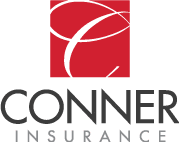Self-Funding with Major Carriers Could Be Costing More Than You Think

For some organizations, self-funding with major insurance carriers can seem like the perfect opportunity to reduce healthcare costs and maintain access to a wide network of providers. While this can be true, it’s important to understand the potential challenges of this choice.
Large insurance carriers may seem like a straightforward choice for self-funding, but they aren’t always the best solution. These carriers can have a vested interest in keeping costs high, and their one-size-fits-all approach may not align with your company’s specific needs.
Without careful planning and management, the potential benefits of self-funding can quickly lead to unwanted surprises.
Financial impact: $55,000 saved
Recently, a story about a patient facing a significant health challenge came to our attention. The patient needed a specialty prescription to help manage their condition, and it came at a staggering cost–$9,000 for a 60-day supply. Fortunately for this member, their plan—a self-funded plan administered by a BUCA (Blue Cross, UnitedHealthcare, Cigna, Aetna) carrier—approved the medication and would cover the expense.
On the outside, this seems like the best-case scenario.
However, a Patient Assistance Program (PAP) went unnoticed. These programs, often offered by pharmaceutical companies, provide medications free of charge or at significantly reduced rates to qualifying patients. In this instance, the patient was about to use the insurance-covered medication without knowing about the cost-saving PAP. It wasn’t until a nurse at the hospital caring for the patient stepped in, initiated the paperwork, and discussed the program with the patient.
Had the medication gone through the standard claims process, the plan would have covered the full $55,000 cost of the employee’s annual medication, which could have led to higher costs for both the business and its employees. Whether that meant adjusting premiums or increasing deductibles, the employer may have had to make changes to manage the financial impact.
Help protect your employees–and your bottom line.
Employees need to be aware that additional ways to reduce costs—such as assistance programs or other cost-saving opportunities—may not be highlighted by their insurer, and they could miss these opportunities if they don't actively seek them out.
Having a benefits specialist available to support employees and discuss their individual needs can be an essential asset. Patient assistance programs are just one example of the hidden opportunities that exist. In this case, a small oversight with potentially big consequences was missed by the insurance carrier.
Whether you’re fully insured or self-funded, reach out to a trusted consultant today. Ask questions about your program, and request an analysis or review. Don’t settle for the status quo. Cost-saving opportunities could be hidden within your plan.
Employees—and employers—don’t need to settle for what the insurance carrier initially provides.
While self-funding with a large carrier might seem like a straightforward way to save, it’s crucial to have a clear understanding of what is actually offered. Careful planning, the right partnerships, and ongoing assessment are essential.
Don’t wait for a costly surprise—contact a consultant to ensure your benefits plan is as efficient and cost-effective as possible. Reach out to learn more. We’re here to help.












